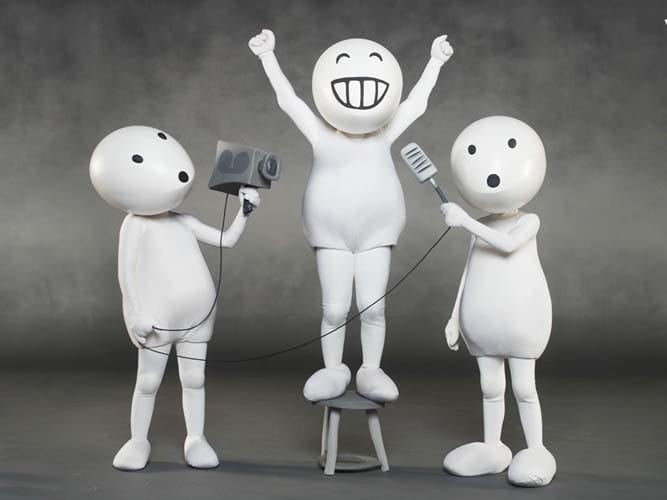
Viral Marketing: Tell a Woman?
Word-of-mouth marketing may sound like an inexact science and its boundaries are expanding, given the vast array of electronic social/viral marketing tools available such as Facebook and Twitter
Traditional marketing wisdom has it that if you want to use “word of mouth” you’d better be sure the people doing the talking are knowledgeable about the product. But a new large-scale field experiment on viral marketing by INSEAD Assistant Professor of Marketing, Andrew Stephen, puts paid to that age-old concept.
“What we found in research with viral marketing companies is that you don’t need experts or brand evangelists. You need social people who like to talk and most of those conversations happened offline.”
Stephen’s comments refer specifically to the launch of a nail polish wand by the upscale brand OPI. Viral marketing was part of a three-pronged campaign: full-page ads in a fashion magazine (circulation approximately 2.5 million), supplements in Sunday newspapers (about 2 million inserts distributed), and an online campaign aimed at 4,315 members of She Speaks, a viral marketing company taking part in the field research and which claims to have a network of 213 million women. Each element contained a discount coupon for one dollar as a try-it stimulus for the new product; coupons were coded to enable researchers to track their origins. The results were astonishing.
“The coupon redemption was less than one per cent for the print media,” says Stephen, referring to the fashion magazine and newspaper supplement ads. “With viral marketing, the redemption rate was 12 per cent. This speaks to the fact that print ads may enhance brand awareness, but they don’t take the horse to water and make him drink.” Or buy a nail polish wand.
Aside from generating significantly more coupon redemptions, the viral campaign spawned a significant amount of offline chatter about the product because, the research found, “the most talkative and socially-interactive participants online also tended to be the most talkative and socially-interactive participants offline.” That is, word-of-mouth marketing is only as effective as the number of mouths involved, and the most active viral campaign participants (based on sharing product coupons with others in this particular case) are those who are more sociable rather than knowledgeable. Stephen and his team say they replicated this result with data from another campaign involving consumer-packaged food (the company name is confidential).
Word-of-mouth marketing may sound like an inexact science – and its boundaries are expanding, given the vast array of electronic social/viral marketing tools available such as Facebook and Twitter. But nevertheless, a lot of money is being thrown at it. Stephen’s research shows that “spending on word-of-mouth (WOM) rose at a compound annual growth rate of 66.7 per cent from 2001 to 2006,” growing to $981 million from $76 million.
Stephen himself claims WOM marketing spend could hit $3 billion by 2013-2014. “It’s growing despite the fact that the ad market is shrinking – ad budgets, marketing budgets. The money is being reallocated to social media, viral marketing, WOM; shifting away from ‘Let’s have another ad in the New York Times’ to ‘Let’s get another viral campaign going.’”
It’s not easy to gauge the interplay between online and offline WOM in viral campaigns. The results seem to imply that sociable people are likely to talk online as well as offline. The viral marketing participants, for example, were given five coupons and a free sample each, while no samples and only one coupon were offered in the magazine and newspaper ads.
“Viral marketing is more engaging,” says Stephen. “It’s you and me talking about a particular product, about me as a participant in a campaign being sent a product. I try it out, tell you about it, and I’ve got some coupons and I give you a coupon … We have a conversation: not just about ‘hey here’s an ad for a brand,’ but actually talking about the brand with each other.”
In contrast to traditional media, viral marketing can be correlated with brand performance in circumstances such as those involving the nail polish product coupon. “TV is one outlet speaking to many,” Stephen says. “Print is the same. Customers don’t connect with each other as easily. They may talk about the TV commercial, but marketers don’t know that. Social media can be tracked; online tools are trackable and quantifiable.”
In today’s tough economic environment, it’s tempting to think of online viral-social media as the answer to tight advertising-marketing budgets. But, Stephen cautions, “it has to be part of an overall marketing plan and linked to a marketing strategy. You need to know who you want your customers to be and what your sales goals are, all within a certain period of time. You’ve got to get the mix right.”
And it could take some time before we see the real value of viral marketing. “We’re starting to see promising indicators of where the value is, basically connecting to customers,” says Stephen. But viral marketing is still a bit like the Wild West: lots of untapped opportunities, but you have to figure out how to tap into them.”
[This article is republished courtesy of INSEAD Knowledge, the portal to the latest business insights and views of The Business School of the World. Copyright INSEAD 2025]















